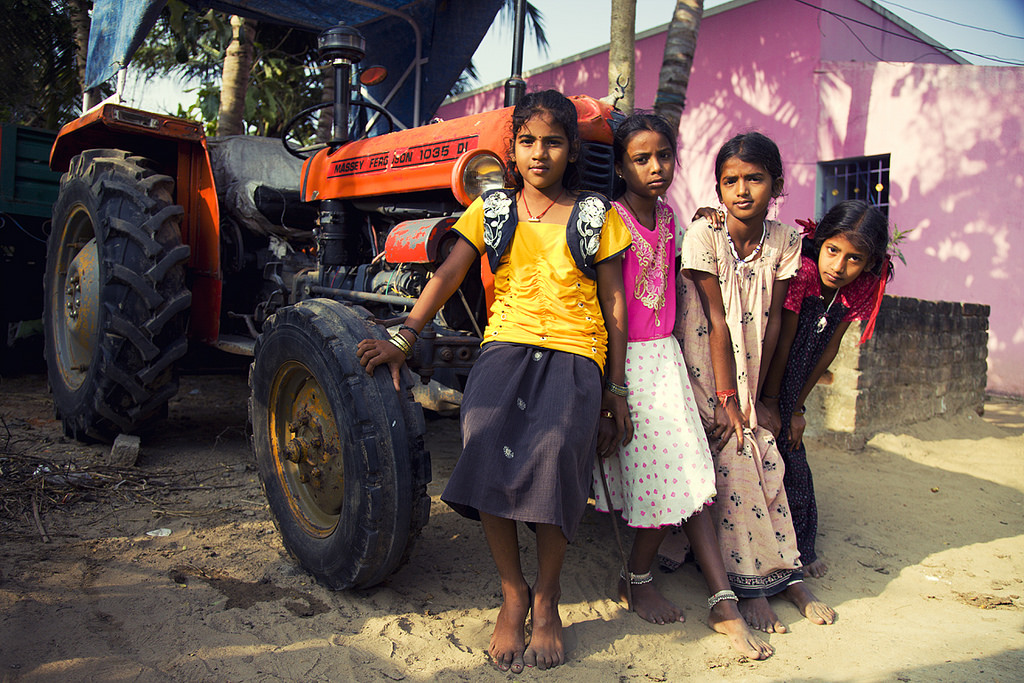Burhanpur in Madhya Pradesh is using colorful faces to identify hard-to-reach malnourished children in a bid to improve its children’s well-being.
A district in Madhya Pradesh has come up with a creative way to tackle the issue of child malnutrition; with the use of emojis.
The district of Burhanpur, located some 340km southwest of Bhopal, has created a simple, child-friendly scheme to help identify its malnourished children, in an attempt to curb the high rates of child malnutrition in the state’s tribal areas.
Burhanpur’s District Collector Deepak Singh was quoted by Newsbit as saying, “In some areas there were few severely malnourished children but they were not covered under the running programme. So we decided to identify the houses and manage these children through community monitoring.”
The ‘emoji campaign,’ devised by the district’s administration, aims to make it easier to identify children with malnutrition by painting brightly coloured faces on the outside of their houses. The concept of the campaign mirrors the popular ‘traffic-light’ system used across the world where the status of a variable is indicated using a red, yellow and green colour-code. For Burhanpur’s emoji campaign, the health status of a child is indicated by the use of red, yellow and green emoji faces to signal if the child is healthy, malnourished or severely malnourished.
The Problem

According to UNICEF, 43% of Indian children under five years are underweight and 48% are stunted as a result of malnutrition. Whilst the problem is nationwide, it’s amongst India’s tribal communities in particular that child malnutrition rates are the most alarming.
Data published in 2015 by Save the Children India stated that Madhya Pradesh has India’s highest number of malnourished children – 74.1% of them under 6 suffer from anaemia, and 60% have to deal with malnutrition.
Also read: Thanks to This College Teacher, Excess Food from Hostels and Canteens is Reaching the Poor
They also claim that the biggest contributor to such statistics is poverty, with many parents unable to afford the cost of feeding their children both regularly and nutritiously. In addition, they recognise a real need to educate women, in particular mothers and expectant mothers, on the importance of good nutrition and healthy eating habits.
Children in districts such as Burhanpur are currently offered two meals regularly at local anganwadis. However, not all children are accessing this service.
Burhanpur’s recent emoji campaign is the district’s attempt to identify the hard-to-reach children in the tribal pockets of the region and offer incentives to motivate parents to take action for their child’s well-being.
The Government’s Response
The campaign itself is simple. A bright-coloured face, or an ‘emoji’, is painted on the outside of every house with a child living inside. A green smiling face indicates a healthy child, a flat yellow face means the child is malnourished whilst a red sad face signals the child is severely malnourished. One emoji is painted on the house for each child living there. Local officials say that under the emoji campaign, children identified as being severely malnourished, by way of a red sad face, will be provided with 2 extra meals in the district’s anganwadi centre in an attempt to nurture them back to health.
As well as a tool for identifying poorly nourished children, the scheme is being used as a method to call on communities to come together to help the children. Having a brightly coloured face on display outside every home alerts community members to the situation on the inside so that they can offer their support to the child’s parents to get the child back to health.
The Local Impact
Although still in it’s early stages, District Collector of Burhanpur Deepak Singh was recently quoted as saying that since the launch of the campaign just a few weeks ago, the district administration has been able to identify 140 anganwadi centres with large number of severely malnourished kids and was able to provide them and their mothers with two additional nutritious meals.
So, can making light of a serious issue like child malnutrition with emojis actually do anything to tackle the issue? We’ll have to keep our notifications switched on for this one.
Featured image credit: Flickr
Like this story? Or have something to share? Write to us: contact@thebetterindia.com, or connect with us on Facebook and Twitter.
NEW: Click here to get positive news on WhatsApp!
If you found our stories insightful, informative, or even just enjoyable, we invite you to consider making a voluntary payment to support the work we do at The Better India. Your contribution helps us continue producing quality content that educates, inspires, and drives positive change.
Choose one of the payment options below for your contribution-
By paying for the stories you value, you directly contribute to sustaining our efforts focused on making a difference in the world. Together, let's ensure that impactful stories continue to be told and shared, enriching lives and communities alike.
Thank you for your support. Here are some frequently asked questions you might find helpful to know why you are contributing?

